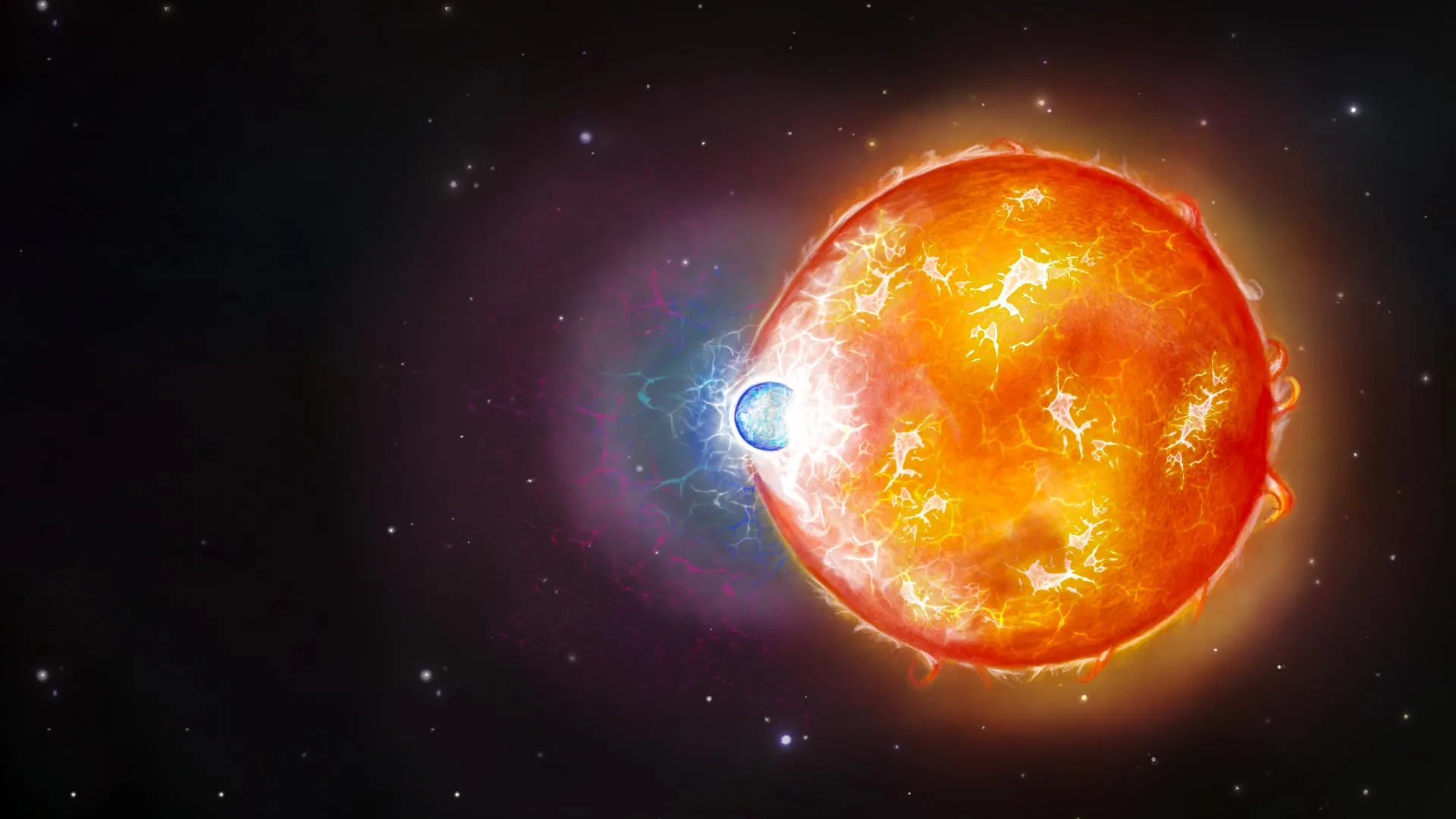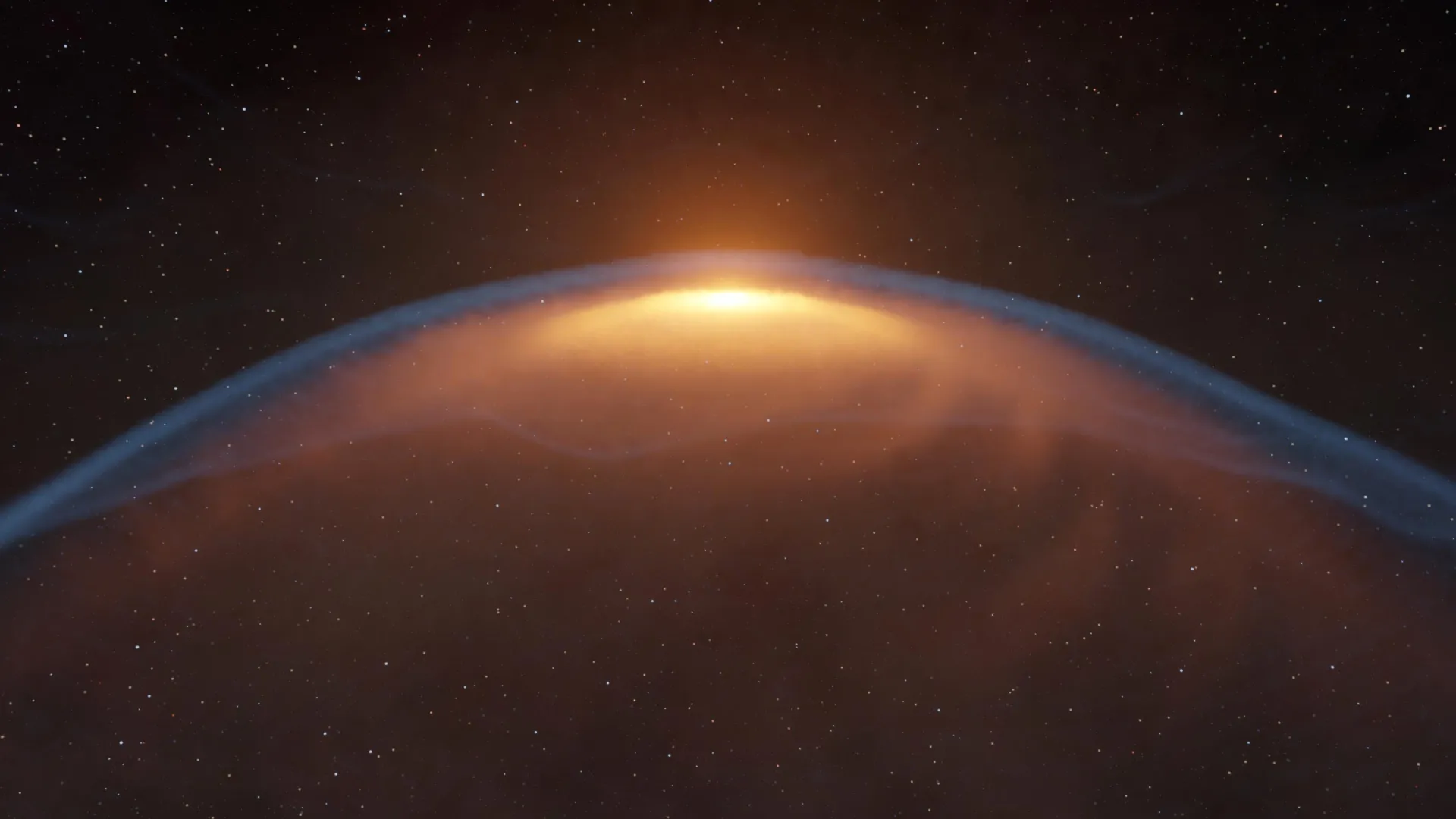Now Reading: Hubble Captures Rare Stellar Collision
-
01
Hubble Captures Rare Stellar Collision
Hubble Captures Rare Stellar Collision

Fast Summary
- Astronomers at the University of Warwick used Hubble Space Telescope ultraviolet observations to study a unique nearby white dwarf, WD 0525+526, located 130 light-years away.
- White dwarfs are remnants of stars that have collapsed after exhausting their fuel, typically composed of carbon adn oxygen cores with helium and hydrogen layers. Ultra-massive white dwarfs (heavier than the Sun) are rare and not well understood.
- WD 0525+526 has a mass 20% larger than that of the Sun and shows small amounts of carbon in its hydrogen-rich atmosphere, indicating it formed from the merger of two stars rather than from a single star collapse.
- The hydrogen-helium envelope surrounding typical white dwarfs has been stripped away in this case due to the merging process, exposing carbon at its surface via semi-convection – an unusual mixing phenomenon identified for the first time in such a star.
- Observations show that WD 0525+526S outer layers are ten-billion times thinner than those in similar stars formed independently without mergers. It also contains much less surface carbon compared to othre merger remnants, suggesting it is indeed still early in its post-merger evolution phase.
- The findings contribute to understanding binary star system fates and phenomena like supernovae while emphasizing Hubble’s critical role as Earth’s atmosphere blocks ultraviolet light utilized for this analysis.
Indian Opinion Analysis
The finding of WD 0525+526 as evidence for stellar mergers provides critical insights into advanced astrophysics and binary star systems’ evolution – informing models predicting phenomena like supernovae or gravitational wave events from extreme cosmic collisions. India’s growing interest in space science renders such studies essential benchmarks for future research missions involving telescopes or observatories with ultraviolet capabilities.
Additionally, India’s budding collaborations on space exploration through ISRO could use these findings as motivation to expand joint ventures with international organizations seeking next-generation tools capable of replacing aging observatories like Hubble. For Indian astrophysicists aiming at leadership roles within global space research communities, enhancing expertise around cosmic remnants will strengthen both technical depth and participation toward unraveling universal mysteries.























